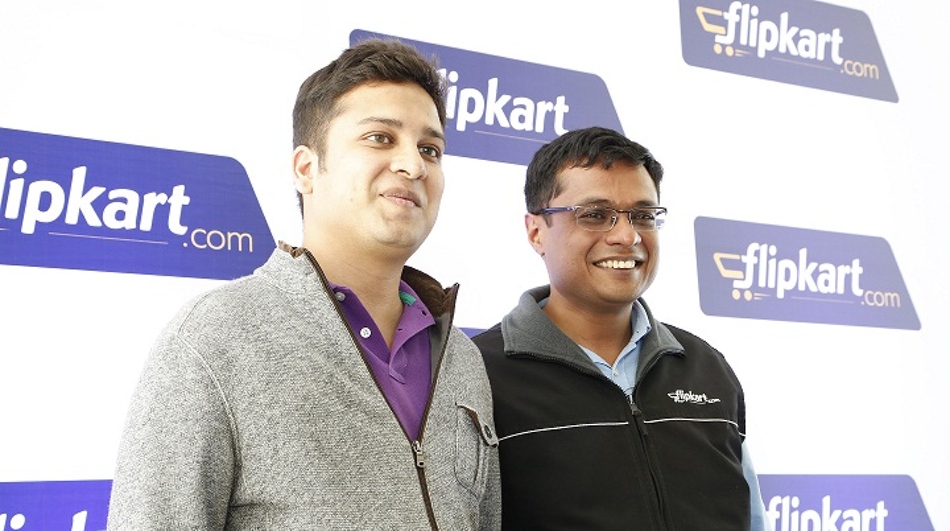
PhonePe digital wallet has big goals beyond parent Flipkart
By Nivedita Bhattacharjee for TechInAsia
Mobile payments startup PhonePe, which Flipkart bought last year, has set its sights high this year.
In the process of launching the country’s first Unified Payments Interface-supported wallet for iOS, the startup is already aiming for a 100 million downloads by the end of 2017.
“We just crossed 10 million app downloads,” founder Sameer Nigam told Tech in Asia in an interview. Sameer wouldn’t say what the app’s active user base is, though.
The Android app has also received a facelift, complete with support for nine local languages.
“It’s something we believe is driving the usage of PhonePe because people are not intimidated by using an app that speaks to them in English,” Sameer said.
For those wondering why another digital wallet is becoming a big deal, here’re some details: the Unified Payments Interface (UPI), which PhonePe works with, is a technology that allows bank-to-bank and bank-to-mobile wallet transfers with minimal identification. It is open source, which means competing banks can include it in their apps and transfer money between each other. The UPI was launched last year as part of the Indian government’s push towards a cashless society.
Once integrated into apps, it can also be adapted to allow wallet-to-wallet transfers.
Working with this technology allows PhonePe easy digital transaction to any customer who logs in. Unlike in many digital wallets, cashbacks and refunds used via this app can be used wherever the customer wants, and are not tied down to merchants.
Advantage Flipkart
Being a Flipkart subsidiary, PhonePe is now integrated with Flipkart, Myntra, and Jabong payments, which directly translates into a ready customer base. For Flipkart, it means a theoretical seamless payments process, potentially cutting back on cash-on-delivery issues.
Before it acquired PhonePe, Flipkart launched its own mobile wallet, Flipkart Money. Flipkart Money was launched 18 months after it shut down PayZippy, a mobile wallet that it started too early and without enough focus to do well. Flipkart’s rival Snapdeal owns payment wallet Freecharge, and India’s largest payment wallet Paytm entered the ecommerce game some years ago.
A full-blown, aggressive push – not surprising considering Flipkart’s resources – could translate PhonePe from yet another wallet to the go-to medium of transaction in the country. In the very least, it will gain a solid foothold in a market currently split into various digital wallets (of which Paytm is king) and cashless experiments.
The startup was built by former Flipkart executives Sameer Nigam and Rahul Chari. Some learnings from Flipkart days, and the friction in making online payments drove them to work on the idea of PhonePe.
“When we had done the Big Billion day sale in 2014, the kind of demand we saw was over 10 million transaction requests, and we took down pretty much every bank and payment gateway in the country with us,” Sameer shared.

Binny Bansal (left) and Sachin Bansal are the two co-founders of India’s top homegrown ecommerce startup. Photo credit: Flipkart.
“When we got that visibility of the innards of the payments systems, we started going and meeting banks, regulators and others trying to understand where is the world headed to. When we started reading up about UPI it was an eye opener because for the first time, perhaps globally, a set of engineers had designed a payment infrastructure, not a set of bankers.”
Sameer says the promise of what UPI could do excited the engineers in them. “We couldn’t sleep for two nights. It was just terribly exciting. so we got together a few old Flipkart hands and started hacking away at it.”
Once Binny Bansal became CEO, he asked the team to use Flipkart as the launchpad.
But PhonePe wants to be more than just Flipkart’s digital wallet. “The idea for Phone Pe is not to provide an experience on Flipkart that is different from any other merchant. The idea is to build India’s best payments app,” Sameer added.
“In the online segment, Flipkart will certainly be a strong part of our business. But when we start talking about tolls and transports, Flipkart will get smaller and smaller. This year Flipkart may be around 20 to 30 percent of transactions, but over time it will come down significantly,” he said.
First appeared at TIA





